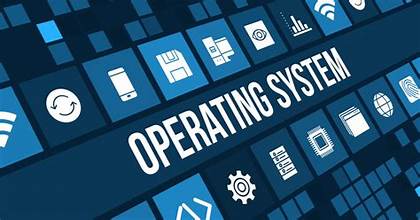

Java is a widely-used, high-level, object-oriented programming language developed by Sun Microsystems (now owned by Oracle Corporation) in 1995. It was designed to be platform-independent, meaning that programs written in Java can run on any device that has a Java Virtual Machine (JVM), making it highly versatile and portable.
Here’s some comprehensive information about Java:
- Platform Independence: One of the key features of Java is its platform independence. Java programs are compiled into bytecode, which is then executed by the JVM. This bytecode can run on any device or operating system that has a compatible JVM installed.
- Object-Oriented: Java is an object-oriented programming language, which means it supports the concepts of classes and objects. It encourages the development of modular, reusable code through the use of classes, inheritance, polymorphism, and encapsulation.
- Syntax: Java syntax is similar to C and C++, making it relatively easy for programmers from those backgrounds to learn. It has a simple and easy-to-understand syntax, with a strong emphasis on readability and maintainability.
- Rich Standard Library: Java comes with a vast standard library (Java API) that provides classes and methods for a wide range of tasks, from basic input/output operations to advanced networking and database connectivity.
- Memory Management: Java manages memory automatically through a process called garbage collection. Developers do not need to explicitly allocate and deallocate memory, which helps in preventing memory leaks and making Java programs more robust.
- Security: Java has built-in security features that help protect systems from harmful activities such as viruses and malware. The Java Security Manager allows developers to define various access controls for Java applications.
- Multi-threading Support: Java supports multithreading, allowing programs to perform multiple tasks simultaneously. This is crucial for developing high-performance applications, such as web servers and multimedia applications.
- Popular Frameworks and Libraries: Java has a rich ecosystem of frameworks and libraries that further simplify development in various domains such as web development (e.g., Spring, Hibernate), enterprise applications (e.g., Java EE), and mobile development (e.g., Android SDK).
- Cross-Platform Development: Java is widely used for cross-platform development, especially in enterprise environments where applications need to run on different operating systems without modification.
- Community Support: Java has a large and active community of developers, which means there are plenty of resources available for learning, troubleshooting, and collaboration.
Overall, Java’s combination of portability, performance, and versatility has made it one of the most popular programming languages in the world, used for a wide range of applications from desktop software to enterprise systems and web development.
HISTORY OF JAVA
The history of Java begins in the early 1990s when a team at Sun Microsystems, led by James Gosling, began developing a new programming language and platform for consumer electronic devices. Here’s a comprehensive guide to the history of Java:
- Origins: In the early 1990s, Sun Microsystems recognized the need for a programming language and platform that could be used across a variety of consumer electronic devices such as set-top boxes, televisions, and appliances. The team, known as the Green Project, aimed to create a language that was portable, platform-independent, and capable of running on embedded systems.
- Oak Language: Initially, the project was named Oak after the oak tree that stood outside Gosling’s office. The Oak language was designed to be simple, object-oriented, and have built-in support for network communication.
- Renaming to Java: In 1995, as the internet was gaining popularity, Sun Microsystems realized that the Oak language was a perfect fit for building dynamic and interactive content for the World Wide Web. The team renamed the language “Java” to reflect its potential to “brew” interactive content on the web.
- Java 1.0: On May 23, 1995, Sun Microsystems officially announced the release of Java 1.0, along with the first public implementation of the Java Virtual Machine (JVM) and Java Development Kit (JDK). Java 1.0 included many of the features that are still fundamental to the language today, such as platform independence, object-oriented programming, and a rich standard library.
- Expansion and Popularity: Java gained popularity rapidly, fueled by its platform independence, robustness, security features, and suitability for web development. Developers embraced Java for building applets, dynamic web content, enterprise applications, and even large-scale distributed systems.
- Java 2 Platform: In December 1998, Sun Microsystems released Java 2, which introduced significant updates and enhancements to the language and platform. Java 2 included new features such as the Swing GUI toolkit, the Collections Framework, and the Java Naming and Directory Interface (JNDI).
- Open Sourcing: In 2006, Sun Microsystems released the source code of the Java platform under the GNU General Public License (GPL) as part of the OpenJDK project. This move paved the way for greater community involvement, transparency, and innovation in the development of Java.
- Acquisition by Oracle: In January 2010, Oracle Corporation acquired Sun Microsystems, becoming the steward of the Java platform and ecosystem. Under Oracle’s leadership, Java continued to evolve with updates, improvements, and new features, while maintaining backward compatibility and stability.
- Java SE, EE, and ME: Over the years, Java has branched into different editions tailored for specific application domains. Java Standard Edition (SE) is used for desktop, server, and general-purpose development. Java Enterprise Edition (EE) provides tools and APIs for building enterprise applications. Java Micro Edition (ME) is designed for embedded and mobile devices.
- Recent Developments: Java continues to evolve with regular releases introducing new language features, performance enhancements, and updates to the standard library. Features like modularization (introduced in Java 9), records, pattern matching, and sealed classes (introduced in later versions) have kept Java relevant in modern software development.
Despite its age, Java remains one of the most widely used and influential programming languages in the world, powering everything from enterprise systems and mobile apps to web applications and big data solutions. Its longevity and versatility speak to the enduring legacy of its design principles and the vibrant community that supports it.




